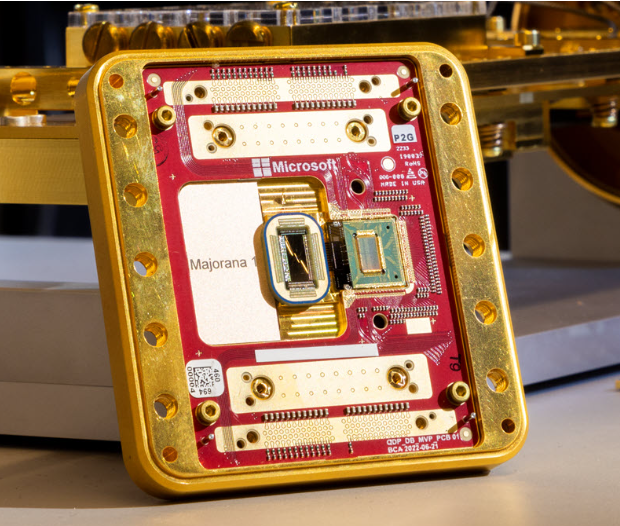
Quantum Computing Chip Majorana-1
Microsoft has recently unveiled the Majorana 1 chip, marking a significant milestone in the evolution of quantum computing. This development promises to enhance the stability and scalability of qubits, the fundamental units of quantum information.
Evolution of Quantum Computing and the Role of Qubits
Quantum computing has progressed from theoretical concepts to tangible technologies over the past few decades. Central to this evolution is the qubit, which, unlike classical bits that represent either a 0 or a 1, can exist in multiple states simultaneously—a phenomenon known as superposition. This property enables quantum computers to process complex computations more efficiently than traditional computers.
Insights into Majorana 1
The Majorana 1 chip is designed with a Topological Core architecture that leverages Majorana particles. These particles are anticipated to improve the reliability and scalability of qubits by making them less prone to errors. Microsoft’s approach involves creating a new class of materials called “topoconductors,” which facilitate topological superconductivity essential for stabilizing qubits. This innovation aims to integrate up to one million qubits on a single chip, significantly advancing computational capabilities.
Comparative Overview: Quantum Computers, Supercomputers, and Classical Computers
Understanding the distinctions between quantum computers, supercomputers, and classical computers is crucial:
| Attribute | Quantum Computers | Supercomputers | Classical Computers |
| Processing Power | Uses quantum bits (qubits) for processing | Uses traditional bits for processing | Uses traditional bits for processing |
| Speed | Exponentially faster for certain tasks | Fast, but not as fast as quantum computers | Slower compared to quantum and supercomputers |
| Architecture | Based on principles of quantum mechanics | Based on classical computing architecture | Based on classical computing architecture |
| Energy Efficiency | Can be more energy efficient for certain tasks | Generally consumes more power | Generally consumes less power |
| Applications | Optimized for quantum algorithms and simulations | Used for a wide range of applications, including simulations and data processing | Used for general-purpose computing tasks |
Potential Applications of Quantum Computers
Quantum computers hold promise for a variety of applications:
- Cryptography: Ability to break complex encryption, necessitating advancements in security protocols.
- Artificial Intelligence: Enhancing machine learning algorithms and data pattern recognition
- Drug Discovery: Simulating molecular structures to expedite the development of new pharmaceuticals.
- Optimization Problems: Enhancing solutions in logistics, finance, and other industries by efficiently solving complex optimization challenges.
- Material Science: Designing new materials with desired properties through accurate quantum simulations.
- Cybersecurity: Developing quantum-safe cryptographic techniques.
- Financial Modeling: Optimizing complex financial models and risk assessments.
- Climate Science: Improving weather forecasting and climate change models
Commercial Significance
The advent of chips like Majorana 1 signifies a leap toward practical and scalable quantum computing solutions. By potentially reducing error rates and increasing qubit stability, this technology could make quantum computing more accessible for commercial applications. Industries such as pharmaceuticals, finance, and cybersecurity stand to benefit from the enhanced computational power, leading to innovations and solutions previously unattainable with classical computing.
In summary, Microsoft’s Majorana 1 chip represents a pivotal advancement in quantum computing, addressing longstanding challenges of qubit stability and scalability. As this technology matures, it is poised to revolutionize various sectors by providing unprecedented computational capabilities.
Quantum computing is not just a technological advancement; it represents a paradigm shift that could transform the way we approach problem-solving and innovation across various fields.








